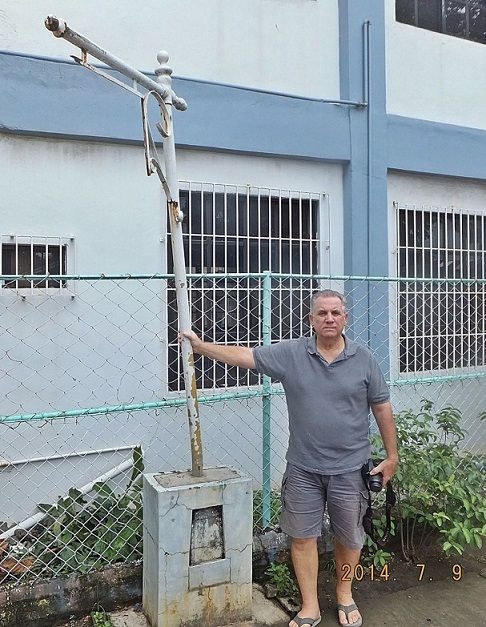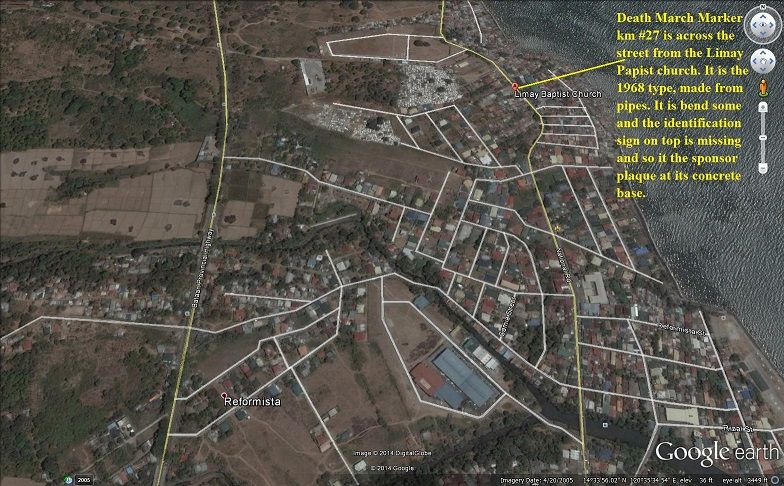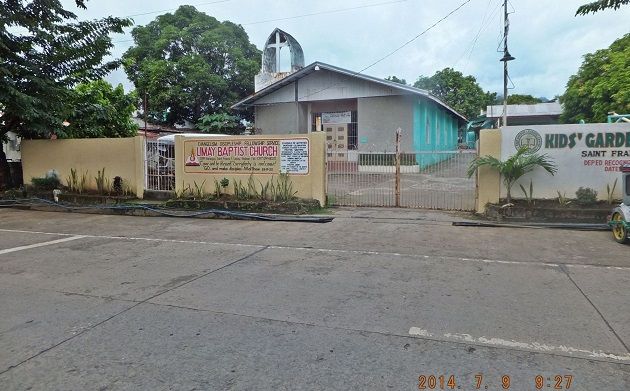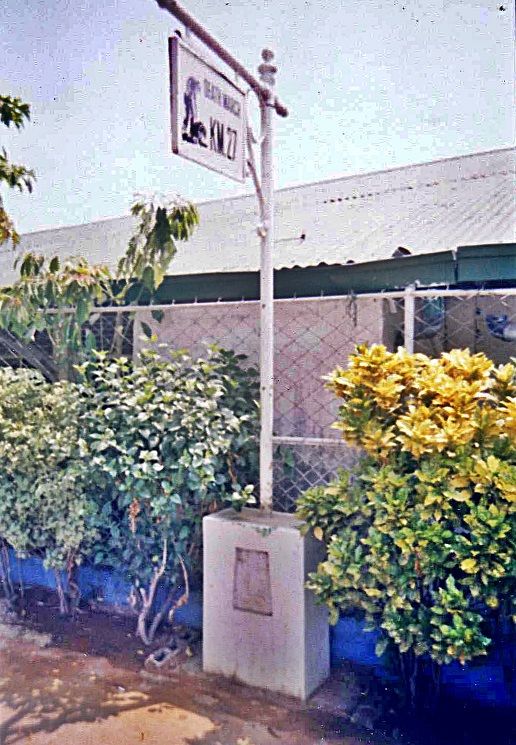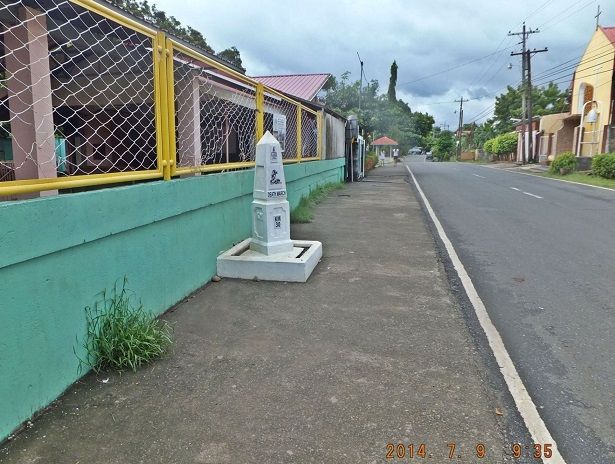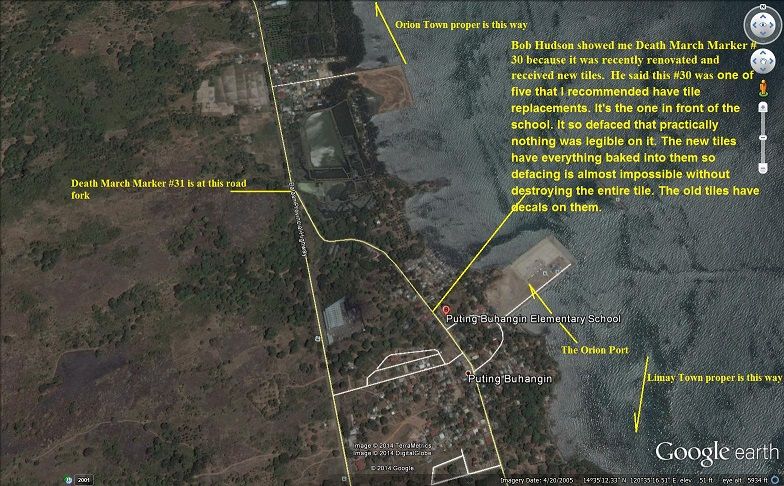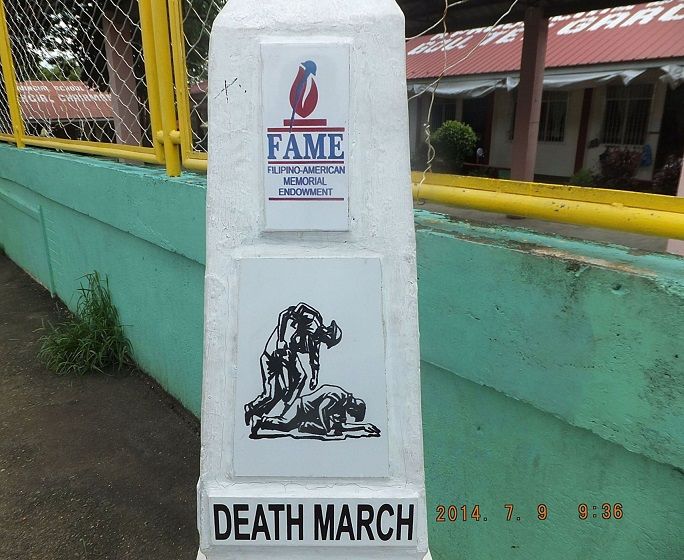Post by pdh54 on Jul 7, 2014 10:31:36 GMT 8
Today I read Ghost of Bataan Speaks by Abie Abraham. Wow, the chapters dealing with the recovery of human remains are absolutely
gripping. I can NOT imagine having the strength Mr. Abraham had in performing the job of finding and recovering the bodies of his fellow soldiers. He had been a POW for three years and then went directly into looking for these bodies, reliving at times the horrors he had endured.
Here is an excerpt that I think probably refers to the Pantingan River Massacre.
Excerpt from Ghost of Bataan Speaks by Abie Abraham, published by Vantage Press Inc, New York New York 1971.
FIRST EXCERPT:
PAGE 223 (after the war has ended.)
Joe Vitanzoa, of Cupan, told me a story that caused my hair to stand on ends. He knew about five hundred Americans and Filipinos being massacred.
“Some were clubbed, some bayoneted, some hit with sabers , and many were shot,” he told me. “It happened in Barrio Mantoong, near Trail 29, and I'm sure that Teodorico Mununun, who lives in Kupang, can tell you the entire story.
“Sergeant,” Mununun said in a low voice, “I was in the jungle looking for souvenirs of battles. I smelled something awful. The whole jungle was filled with the horrible smell. Before I realized what was happening, my brown skin turned white. Hundreds of brown and white bodies lay before me. I saw red hair, large noses, and many skulls were broken.”
“Would you show me the area?”
“Sure, my friend.”
I sent for Amado, Maguel, David, and Santiago.
“What's up Sergeant?” Amado asked.
“We're going to disinter three hundred Americans and two hundred Filipinos who were killed along the Death March, starting in the jungles in the area of Barrio Mantoong.”
“Gee,” David said with a whistle, “that's a bad place.”
“There's millions of blood-sucking leeches there – some six inches long,” Santiago told me.
“We can put oil on our bodies, and hands and faces,” Amado suggested.
That night I did a lot of tossing in bed and a lot of hard thinking. What were we getting into? kept looming before me. It was bad enough wading through the heat and facing Japanese snipers, and now leeches were added to our troubles.
(Patty – There were still Japanese stragglers around who did not know the war was over and fired on Abraham and his group at times)
We cut our way through the denseness and became lost in the hot jungle. It was not long until we were staring at fox holes, canteens, helmets with bullet holes in them, and ammunition rotting in the steaming dampness. Death stalked the area. I could feel it. I could see the screaming Japanese thrusting their bayonets at the helpless men, and hear the cries and pleas for help. No help came.
“Sergeant, come quick,” Amado called.
I rushed forward, death stalking once again. I stopped suddenly and speechless, stared down into a yawning ravine. It was almost filled with bones and skulls were scattered about. Finally I closed my eyes, shivered, and called upon the Almighty for strength and courage. I managed to climb down into the ravine and began looking for tags. I shuddered when I noticed that many of the skulls had been cracked with a heavy club. Many of the bones were bound and tied with wires.
“It's beginning to get dark,” I told my horror stricken men. “Let's camp by the river and finish the job tomorrow.”
It became a long night of battling with the leeches. We kept turning on our flashlights and raking them off our faces and hands in spite of Amado's oil applications. They came and they came. Finally, we built a fire and hovered around it for the rest of the night. Slowly the dawn appeared and a little light seeped through, then the sun inched its way up through the tree tops. We returned to the ravine and began recovering the remains.
SECOND EXCERPT:
PAGE 62 (during the war)
I cannot forget the fate of the 91st Division of the Philippine Army, at the junction of Trail Six and Twenty-nine. They were stopped by a Japanese Staff car. The four hundred officers and non-commissioned officers were ordered to stay behind, and the rest were ordered to continue the march. These four hundred men were tied and lined up on the length of a nearby ravine. Japanese officers, samurai swords flashing, announced through an interpreter:
"Had the surrender been earlier, this would not have had to happen. If you have any requests to make, you may do so."
"Kill us with machine gun fire -- " was the request.
Their request was denied. Instead, bayonets were stabbed into the victims back, while officers slashed at their heads with their gleaming swords. If a man made a sound on the first thrust, he would be repeatedly bayoneted until he could make no more sounds.
Sun-blackened and bloated bodies were scattered all across the scarred battlefield, filling the hot air with a terrible stench.
Do these two entries seem to indicate that there were at least two instances of mass murder along the river?
Mr. Abraham talks about the 91st's experience during the war. He knows about it, or heard about it.
The other incident seems to be more of a surprise to him.
Are there any suggestions on the comparing of the disinterment chart (Bob Hudson's post) to these two entries?
Patty
gripping. I can NOT imagine having the strength Mr. Abraham had in performing the job of finding and recovering the bodies of his fellow soldiers. He had been a POW for three years and then went directly into looking for these bodies, reliving at times the horrors he had endured.
Here is an excerpt that I think probably refers to the Pantingan River Massacre.
Excerpt from Ghost of Bataan Speaks by Abie Abraham, published by Vantage Press Inc, New York New York 1971.
FIRST EXCERPT:
PAGE 223 (after the war has ended.)
Joe Vitanzoa, of Cupan, told me a story that caused my hair to stand on ends. He knew about five hundred Americans and Filipinos being massacred.
“Some were clubbed, some bayoneted, some hit with sabers , and many were shot,” he told me. “It happened in Barrio Mantoong, near Trail 29, and I'm sure that Teodorico Mununun, who lives in Kupang, can tell you the entire story.
“Sergeant,” Mununun said in a low voice, “I was in the jungle looking for souvenirs of battles. I smelled something awful. The whole jungle was filled with the horrible smell. Before I realized what was happening, my brown skin turned white. Hundreds of brown and white bodies lay before me. I saw red hair, large noses, and many skulls were broken.”
“Would you show me the area?”
“Sure, my friend.”
I sent for Amado, Maguel, David, and Santiago.
“What's up Sergeant?” Amado asked.
“We're going to disinter three hundred Americans and two hundred Filipinos who were killed along the Death March, starting in the jungles in the area of Barrio Mantoong.”
“Gee,” David said with a whistle, “that's a bad place.”
“There's millions of blood-sucking leeches there – some six inches long,” Santiago told me.
“We can put oil on our bodies, and hands and faces,” Amado suggested.
That night I did a lot of tossing in bed and a lot of hard thinking. What were we getting into? kept looming before me. It was bad enough wading through the heat and facing Japanese snipers, and now leeches were added to our troubles.
(Patty – There were still Japanese stragglers around who did not know the war was over and fired on Abraham and his group at times)
We cut our way through the denseness and became lost in the hot jungle. It was not long until we were staring at fox holes, canteens, helmets with bullet holes in them, and ammunition rotting in the steaming dampness. Death stalked the area. I could feel it. I could see the screaming Japanese thrusting their bayonets at the helpless men, and hear the cries and pleas for help. No help came.
“Sergeant, come quick,” Amado called.
I rushed forward, death stalking once again. I stopped suddenly and speechless, stared down into a yawning ravine. It was almost filled with bones and skulls were scattered about. Finally I closed my eyes, shivered, and called upon the Almighty for strength and courage. I managed to climb down into the ravine and began looking for tags. I shuddered when I noticed that many of the skulls had been cracked with a heavy club. Many of the bones were bound and tied with wires.
“It's beginning to get dark,” I told my horror stricken men. “Let's camp by the river and finish the job tomorrow.”
It became a long night of battling with the leeches. We kept turning on our flashlights and raking them off our faces and hands in spite of Amado's oil applications. They came and they came. Finally, we built a fire and hovered around it for the rest of the night. Slowly the dawn appeared and a little light seeped through, then the sun inched its way up through the tree tops. We returned to the ravine and began recovering the remains.
SECOND EXCERPT:
PAGE 62 (during the war)
I cannot forget the fate of the 91st Division of the Philippine Army, at the junction of Trail Six and Twenty-nine. They were stopped by a Japanese Staff car. The four hundred officers and non-commissioned officers were ordered to stay behind, and the rest were ordered to continue the march. These four hundred men were tied and lined up on the length of a nearby ravine. Japanese officers, samurai swords flashing, announced through an interpreter:
"Had the surrender been earlier, this would not have had to happen. If you have any requests to make, you may do so."
"Kill us with machine gun fire -- " was the request.
Their request was denied. Instead, bayonets were stabbed into the victims back, while officers slashed at their heads with their gleaming swords. If a man made a sound on the first thrust, he would be repeatedly bayoneted until he could make no more sounds.
Sun-blackened and bloated bodies were scattered all across the scarred battlefield, filling the hot air with a terrible stench.
Do these two entries seem to indicate that there were at least two instances of mass murder along the river?
Mr. Abraham talks about the 91st's experience during the war. He knows about it, or heard about it.
The other incident seems to be more of a surprise to him.
Are there any suggestions on the comparing of the disinterment chart (Bob Hudson's post) to these two entries?
Patty








